

| A population comparison between two UK Glow Worm colonies 2013 |
| .... |
| 2013 provided us with the opportunity to make a direct comparison of the Glow Worm colonies at different sites within the UK. We were primarily looking at comparing the pattern and rates of female emergence at the two colonies during a complete season. This would obviously mean that both sets of data, produced by the same recording methods, would have to be applied by recorders working each site. |
| .... |
| Such comparison work, had
long been an aspect of Glow Worm research that Martin
Dale and ourselves had discussed for several years, so we
would like to thank Jenni Cox for providing us with this
exciting opportunity and allowing us to use her
meticulous data and photographs. Her recording work and
considerable effort is enormously appreciated. Our survey work and methods of recording Glow Worms at Clipstone Old Quarter in Nottinghamshire, is regarded as being some of the most thorough, but it was impractical to expect Jenni to mark each female in the way we do, as part of the methodology we employ at Clipstone Old Quarter. For the aims of this particular research, female marking/labelling etc was not required anyway. All that was needed was the total number of females within a given area, on every night throughout the entire season. |
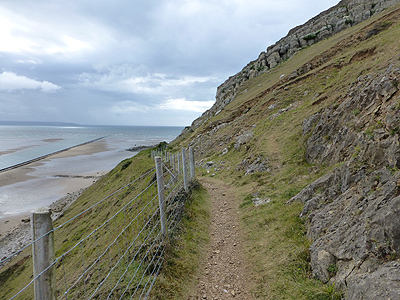 |
|
| .... | ||
| Many people reading this
will have no idea of the effort required for such a task,
so for us to find someone willing to undertake this for
potentially (depending on season length) a hundred or
more consecutive nights, was all the more remarkable. Habitat extremes - a brief introduction to two very different Glow Worm habitats The right and upper right photographs, show part of Jenni's recording area on the Great Orme, with our own recording area of Clipstone Old Quarter in the two photographs below. Jenni's Glow Worm study site is on the north-west coast of Wales on the Great Orme at Llandudno, Conwy and ours at Clipstone Old Quarter, an area of commercial forestry within Sherwood Forest, Nottinghamshire. Due to the expanse of the Great Orme, Jenni worked a much smaller area of the site each night (the comparison area), which she was able to cover easily. |
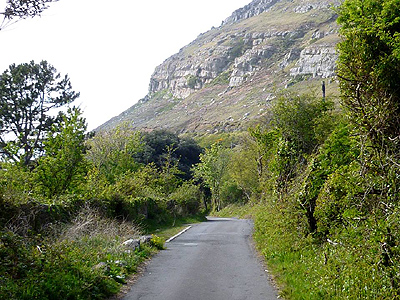 |
|
| .... | ||
| Having such different sites was especially interesting, due to the extreme differences shown by the two. The sites differ not only in habitat, but also climatically, with the coastal site of the Great Orme being noticeably warmer by several degrees, evident in the temperature data sent to us by Jenni. If these two sites produced any similarities in the returned data, then that would mean most UK sites would be likely do the same. | ||
| .... | ||
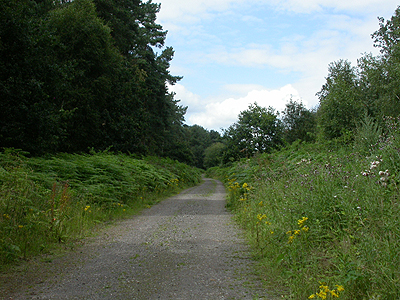 |
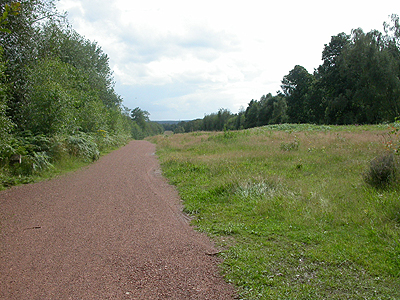 |
|
| .... | ||
| Comparison
data on male and female Glow Worm emergence Both sites also show huge differences in their respective Glow Worm populations. Whilst we are confident that Clipstone Old Quarter is one of the best inland colonies (its certainly the most consistantly recorded colony in the UK) our record single count of females is still below 100. Over the past few years, counts of many hundreds of female Glow Worms have been recorded by Jenni on the Great Orme and Robin Scagell of the UK Glow Worm Survey also counted over a hundred females on his visit there last year. The resulting data proved to be especially interesting. Immediately obvious from the two graphs produced below, is the huge difference in the numbers of Glow Worms between the sites. Because of the higher Glow Worm numbers at the Great Orme, rises and falls are more evident in Fig 02. Rises in numbers are of course, caused by the sudden emergences of females. Falls are due to numbers of females being mated the night before, following a large emergence of males and females subsequently not glowing again. At a glance, there may seem to be no comparison in the data at all, but there were five key points of rise and fall in numbers during the course of the season. Ignore the number of dates between the key points in Fig 01 and Fig 02, as for this study we were looking for the peaks and not the length of time between them. |
||
| .... |
| Fig 01. .. Seasonal site counts and female Glow Worm emergence/numbers at Clipstone Old Quarter in 2013 |
 |
| .... | ||
| Fig 02. .. Seasonal site counts and female Glow Worm emergence/numbers at Great Orme in 2013 |
 |
| .... |
| Key points 1 and 2 both
represent small increases above the general increase in
female Glow Worm numbers, occurring before a sudden rise
to peak numbers (season maximum) at key point 3. As the
number of females begin to decline, key point 4 marks
another slight increase against the general decline in
females. Key point 5 marks the second of the two
post-maximum peaks in female numbers. The number of males at the Great Orme was astonishing and reached three figure counts on six occasions. Because of the sheer number of female Glow Worms on site, Jenni rarely had the opportunity to check for males with females. Instead, the extraordinarily high numbers of males, were largely to be found on the pavement below street lighting, situated at the end of Marine Drive near West Shore. Peak male numbers, interestingly occurred just after the peak numbers of females. As far as we are aware, the number of times a male can successfully mate is still unknown. Possibly these are males that have already mated with females and are now largely spent. But could previously mated males be out-competed by freshly emerged, more vigorous males?, or is the attraction is just down to street lighting? |
| .... |
| Fig 03. .. Seasonal site counts and male Glow Worm emergence/numbers at Great Orme in 2013 | ||
 |
||
| .... | ||
| Despite the males congregating under street lighting, it is clear from the number around the Great Orme, that females must be successfully attracting males, although there are fewer females in the general area of the street lights. There is ample opportunity for further study on this subject, which could involve the marking of all males found under street lighting, then checking for females mating with marked males over the following nights. | ||
| .... |
| Colour coding the males,
using a dfferent colour each night, may allow more
detailed and thorough analysis. Alternatively, males
found with females could be marked to see if they
eventually turn up under street lighting. Fig 03 shows the seasonal site counts and male Glow Worm emergence and numbers at the Great Orme in 2013. We have superimposed the five key points of female emergence/peaks from Fig 01 and Fig 02, against the number of males each night on the Great Orme. This proved interesting, as it showed that the peak number of males under street lighting, actually occurred just after the high seasonal peak numbers of females. There is a small peak which coincided with peak numbers of females (key point 3) so does this mean that males were successfully finding and mating with females, then more greatly attracted to the street lights on the nights following mating? This could account for the slightly later peak in the number of males. |
|
|||||||||||||||||||||||||||||||||||||||||||||||||
| .... | ||||||||||||||||||||||||||||||||||||||||||||||||||
| It is very
tempting to jump to the conclusion that street lighting
along Marine Drive could be having (or has had) an
adverse effect on the Great Orme Glow Worm population.
But without successive years of accurate data, such a
conclusion cannot really be reached at this stage, but
there is no reason why we cannot speculate or propose
theories. Although the number of males recorded at Clipstone Old Quarter never got near double figures, it was obvious through the high percentage of 'one night' females shown in Table 01, that male numbers were particularly high in 2013. Going purely by male counts, the peak dates for males at Jenni's Great Orme site was between June 3rd and 8th, with a maximum of 268 males on June 7th. Peak numbers of males at Clipstone Old Quarter came a few days earlier, between June 23rd and 29th. |
||||||||||||||||||||||||||||||||||||||||||||||||||
| .... | ||||||||||||
| Table 02. .. Comparison site and Glow Worm data 2013 | ||||||||||||
| .... | ||||||||||||
| T°C = Site temperature .... Nm = Total males recorded .... Nf = Total females recorded | ||||||||||||
| .... | ||||||||||||
| Clipstone Old Quarter | The Great Orme | |||||||||||
| Date | Weather conditions / summary | T°C | Nm | Nf | Weather conditions / summary | T°C | Nm | Nf | ||||
| .... | . | . | . | . | . | ..... | . | ..................................................................................... | . | . | . | ..... |
| 05/06/13 | Cloudy and mild | 12°C | 2 | 0 | Dry | 14°C | 0 | 0 | ||||
| 06/06/13 | Clear and fairly mild | 09°C | 0 | 0 | Dry | 15°C | 0 | 1 | ||||
| 07/06/13 | Clear and mild | 10°C | 1 | 0 | Dry and clear | 15°C | 0 | 1 | ||||
| 08/06/13 | Cloudy and mild | 10°C | 0 | 2 | Dry and clear | 16°C | 0 | 6 | ||||
| 09/06/13 | Cloudy and mild | 12°C | 0 | 4 | Dry and clear | 15°C | 0 | 14 | ||||
| 10/06/13 | Clear and cool | 08°C | 0 | 1 | Dry and clear | 17°C | 0 | 23 | ||||
| 11/06/13 | Cloudy and very mild | 14°C | 0 | 6 | Cloudy with showers, but mild | 17°C | 1 | 29 | ||||
| 12/06/13 | Cloudy and very mild | 15°C | 1 | 6 | Windy, with some rain during the day | 16°C | 0 | 28 | ||||
| 13/06/13 | Cloudy and mild | 11°C | 0 | 2 | Windy, with some rain during the day | 14°C | 0 | 22 | ||||
| 14/06/13 | Cloudy and mild with rain | 13°C | 0 | 6 | Overcast with rain | 14°C | 0 | 16 | ||||
| 15/06/13 | Partly cloudy and mild with a little light rain | 12°C | 0 | 9 | Windy, with some rain during the day | 14°C | 0 | 48 | ||||
| 16/06/13 | Cloudy and mild | 13°C | 3 | 14 | Overcast with showers | 15°C | 0 | 37 | ||||
| 17/06/13 | Cloudy and mild | 13°C | 0 | 7 | Overcast with light rain and breezy | 17°C | 0 | 63 | ||||
| 18/06/13 | Cloudy and warm | 16°C | 0 | 6 | Cloudy and warm | 18°C | 50 | 54 | ||||
| 19/06/13 | Partly cloudy and mild | 14°C | 2 | 6 | Clear and very mild | 16°C | 29 | 25 | ||||
| 20/06/13 | Heavy rain late afternoon, continuing into the night | 13°C | 0 | 9 | Cloudy, with some rain during the day | 17°C | 52 | 35 | ||||
| 21/06/13 | Clear and dry, becoming overcast | 15°C | 4 | 10 | Overcast with showers and breezy, but mild | 15°C | 44 | 75 | ||||
| 22/06/13 | Clear and dry, with a full moon | 13°C | 0 | 6 | Overcast with showers and breezy | 14°C | 15 | 62 | ||||
| 23/06/13 | Cloudy and mild, breezy | 12°C | 1 | 18 | Damp, overcast and windy | 13°C | 0 | 43 | ||||
| 24/06/13 | Clear and cool | 08°C | 0 | 6 | Damp, overcast and breezy, but mild | 15°C | 15 | 104 | ||||
| 25/06/13 | Cloudy and mild | 12°C | 1 | 22 | Overcast and breezy | 16°C | 38 | 159 | ||||
| 26/06/13 | Cloudy and mild | 14°C | 7 | 18 | Clear skies and breezy | 15°C | 13 | 218 | ||||
| 27/06/13 | Cloudy and mild, some rain during the day | 12°C | 1 | 15 | Damp ground, breezy with fog | 14°C | 21 | 212 | ||||
| 28/06/13 | Dry, cloudy and mild, rain during the day | 12°C | 1 | 6 | Cloudy and breezy | 15°C | 34 | 153 | ||||
| 29/06/13 | Cloudy and mild, becoming clear later | 13°C | 4 | 15 | Clear and breezy | 18°C | 44 | 192 | ||||
| 30/06/13 | Cloudy and warm | 16°C | 2 | 23 | Cloudy and damp, breezy | 15°C | 73 | 204 | ||||
| 01/07/13 | Clear and cool | 09°C | 0 | 8 | Cloudy and windy | 16°C | 45 | 169 | ||||
| 02/07/13 | Cloudy and warm, with some light rain | 15°C | 0 | 39 | Overcast wth showers and windy | 17°C | 28 | 190 | ||||
| 03/07/13 | Clear and mild | 12°C | 3 | 29 | Clear and breezy | 16°C | 103 | 192 | ||||
| 04/07/13 | Partly cloudy, becoming clear | 13°C | 1 | 32 | Clear and breezy | 17°C | 134 | 154 | ||||
| 05/07/13 | Clear and warm | 17°C | 2 | 78 | Cloudy with a light breeze | 18°C | 116 | 123 | ||||
| 06/07/13 | Clear and warm | 16°C | 1 | 81 | Clear skies with a light breeze | 18°C | 149 | 111 | ||||
| 07/07/13 | Overcast and warm | 19°C | 4 | 90 | Clear skies with a light breeze | 20°C | 268 | 113 | ||||
| 08/07/13 | Clear and mild | 13°C | 3 | 46 | Clear and warm | 21°C | 209 | 120 | ||||
| 09/07/13 | Partly overcast and warm | 20°C | 4 | 81 | Clear and warm | 21°C | 77 | 161 | ||||
| 10/07/13 | Cloudy and mild | 13°C | 1 | 52 | Cloudy and breezy | 20°C | 94 | 109 | ||||
| 11/07/13 | Clear and mild | 12°C | 1 | 36 | Clear and breezy | 19°C | 76 | 110 | ||||
| 12/07/13 | Cloudy and very warm | 21°C | 2 | 57 | Clear and very warm | 21°C | 51 | 100 | ||||
| 13/07/13 | Clear and very warm | 18°C | 1 | 30 | Clear and breezy | 18°C | 30 | 77 | ||||
| 14/07/13 | Clear and warm | 14°C | 0 | 18 | Clear and warm | 18°C | 29 | 75 | ||||
| 15/07/13 | Clear and very warm | 19°C | 1 | 20 | Clear and warm | 18°C | 44 | 80 | ||||
| 16/07/13 | Clear and very warm | 21°C | 0 | 21 | Clear and warm | 18°C | 19 | 71 | ||||
| 17/07/13 | Clear and very warm | 19°C | 0 | 16 | Clear and very warm | 21°C | 24 | 67 | ||||
| 18/07/13 | Clear and very warm | 19°C | 1 | 12 | Clear and very warm | 22°C | 9 | 67 | ||||
| 19/07/13 | Partly cloudy and very warm | 19°C | 0 | 10 | Clear and very warm | 23°C | 15 | 44 | ||||
| 20/07/13 | Cloudy and warm | 18°C | 0 | 10 | Cloudy and breezy | 22°C | 11 | 15 | ||||
| 21/07/13 | Clear and warm | 16°C | 1 | 9 | Clear and breezy | 21°C | 1 | 16 | ||||
| 22/07/13 | Cloudy and warm with thunderstorms | 20°C | 0 | 6 | Cloudy and misty, with a slight breeze | 22°C | 0 | 8 | ||||
| 23/07/13 | Clear, warm and misty | 19°C | 0 | 5 | Clear with a light breeze | 20°C | 1 | 7 | ||||
| 24/07/13 | Cloudy and very mild | 20°C | 0 | 6 | Cloudy, some rain and a light breeze. | 22°C | 0 | 2 | ||||
| 25/07/13 | Cloudy and very mild | 20°C | 0 | 4 | Cloudy and breezy | 21°C | 0 | 4 | ||||
| 26/07/13 | Clear and mild | 18°C | 0 | 3 | Clear | 19°C | 0 | 5 | ||||
| 27/07/13 | Heavy rain | 17°C | 0 | 1 | Overcast with rain | 20°C | 0 | 3 | ||||
| 28/07/13 | Dry, rain earlier in the afternoon | 18°C | 0 | 0 | Cloudy with showers | 19°C | 0 | 0 | ||||
| 29/07/13 | Clear and mild | 16°C | 0 | 0 | Cloudy and windy | 18°C | 0 | 2 | ||||
| 30/07/13 | Clear and mild | 18°C | 0 | 0 | Cloudy | 18°C | 0 | 0 | ||||
| 31/07/13 | - | - | - | - | Cloudy with showers and breezy | 20°C | 0 | 2 | ||||
| 01/08/13 | - | - | - | - | Clear and breezy | 19°C | 0 | 1 | ||||
| 02/08/13 | - | - | - | - | Clear and windy | 20°C | 0 | 1 | ||||
| 03/08/13 | - | - | - | - | Cloudy and breezy | 19°C | 0 | 0 | ||||
| 04/08/13 | - | - | - | - | Cloudy and windy | 20°C | 0 | 0 | ||||
| .... | ||||||||||||
| Table 02 shows the general data for both sites during the glowing season. The temperature range is interesting, clearly showing the more mild conditions on the coast, with ranges of between 8-21°C at Clipstone Old Quarter, compared to 13-23°C at the Great Orme. The length of the female glowing season was also very similar, lasting for approximately 50 nights at Clipstone Old Quarter, compared to 58 nights on the Great Orme. |
| .... | |||||||||||||||||||
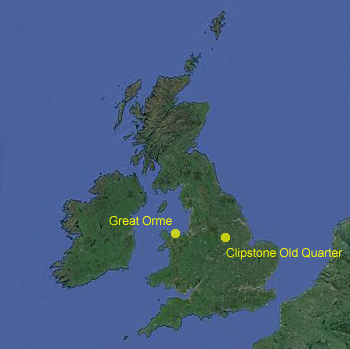 |
|
||||||||||||||||||
| .... | |||||||||||||||||||
| Summary and the
possibilities for future comparison study It would help if similar comparisons between Clipstone Old Quarter and the Great Orme, possibly incorporating Glow Worm sites in the south of the UK or Scotland, could be made in the coming years. There's plenty of possible research options, as it is becoming clear to us, that we still actually know very little about the intricacies of Glow Worm biology. |